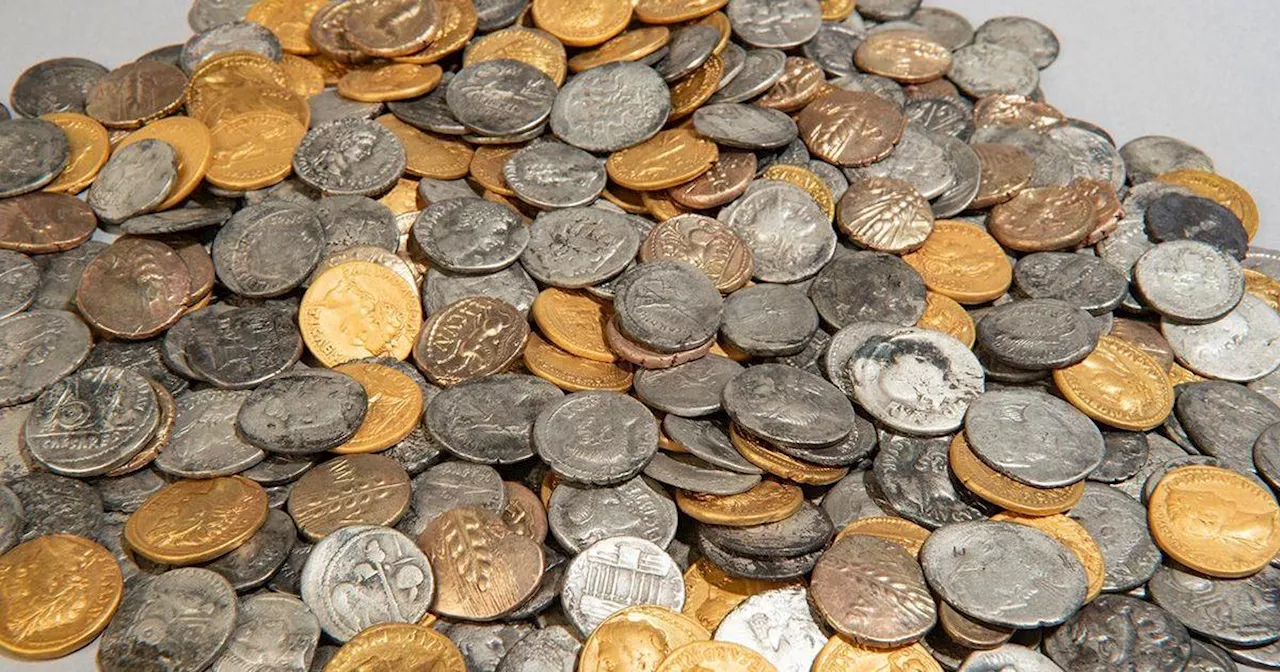A remarkable discovery of hundreds of Roman-era gold and silver coins has been made in a field near Bunnik, Netherlands. The coins, dating back thousands of years, offer valuable insights into the Roman Empire's history and interactions with Britain.
Hundreds of Roman-era gold and silver coins were discovered in a field outside Bunnik , a village in the Netherlands , according to officials. The coins, dating back thousands of years, consist of a mix of Roman and British currency. Bunnik , once situated along the northern border of the Roman Empire , has never witnessed such a significant find on the European mainland. The closest comparable discovery was made in Great Britain.
Two metal detectorists stumbled upon the treasure and promptly reported their findings to the authorities. A subsequent examination by an archaeologist confirmed the authenticity of the coins, leading to a larger excavation. The majority of the artifacts unearthed were Roman coins minted between 46 and 47 A.D., coinciding with the end of the first Roman conquests in Britain. These coins predominantly bear the portrait of Emperor Claudius. Nearly 300 of the Roman coins are silver denarii, produced between 200 B.C. and 47 A.D. Some coins showcase unique portraits, including several of Julius Caesar and one featuring Juba, the king of a North African region encompassing present-day Algeria. Additionally, 72 gold aurei, dating from 18 B.C. to 47 A.D., were found. These coins exhibit no signs of wear and are believed to have originated from a pile of freshly minted coins.Among the Roman coins, a collection of several dozen coins made from an alloy of gold, silver, and copper hails from present-day Great Britain. These coins bear the likeness of Celtic king Cunobelinus, who reigned between 9 and 40 A.D. The king's name is also inscribed on these coins, known as 'staters.' The Cultural Heritage Agency suggests that Roman soldiers returning from Britain may have carried these coins to Bunnik. While the British coins could represent spoils of war, the Roman coins likely served as currency. It is hypothesized that the coins were buried for temporary concealment or as an offering to the gods, possibly as 'an expression of gratitude to the gods for a safe return from battle,' according to the agency. The discovery underscores the significance of the Lower Germanic limes, a series of fortified points marking the border between the Roman Empire's Germanic provinces. This limes existed from 83 to approximately 260 A.D., as recognized by the UNESCO World Heritage Convention, separating the empire from Germanic tribes. The coins provide evidence that Roman troops returning from Britain utilized these points as a route back home. 381 out of the 404 coins were acquired by the National Museum of Antiquities. These coins are now on display as part of a permanent exhibition at the National Archaeology Collection
Roman Coins British Coins Netherlands Archaeology Roman Empire History Bunnik Cultural Heritage Agency
United States Latest News, United States Headlines
Similar News:You can also read news stories similar to this one that we have collected from other news sources.
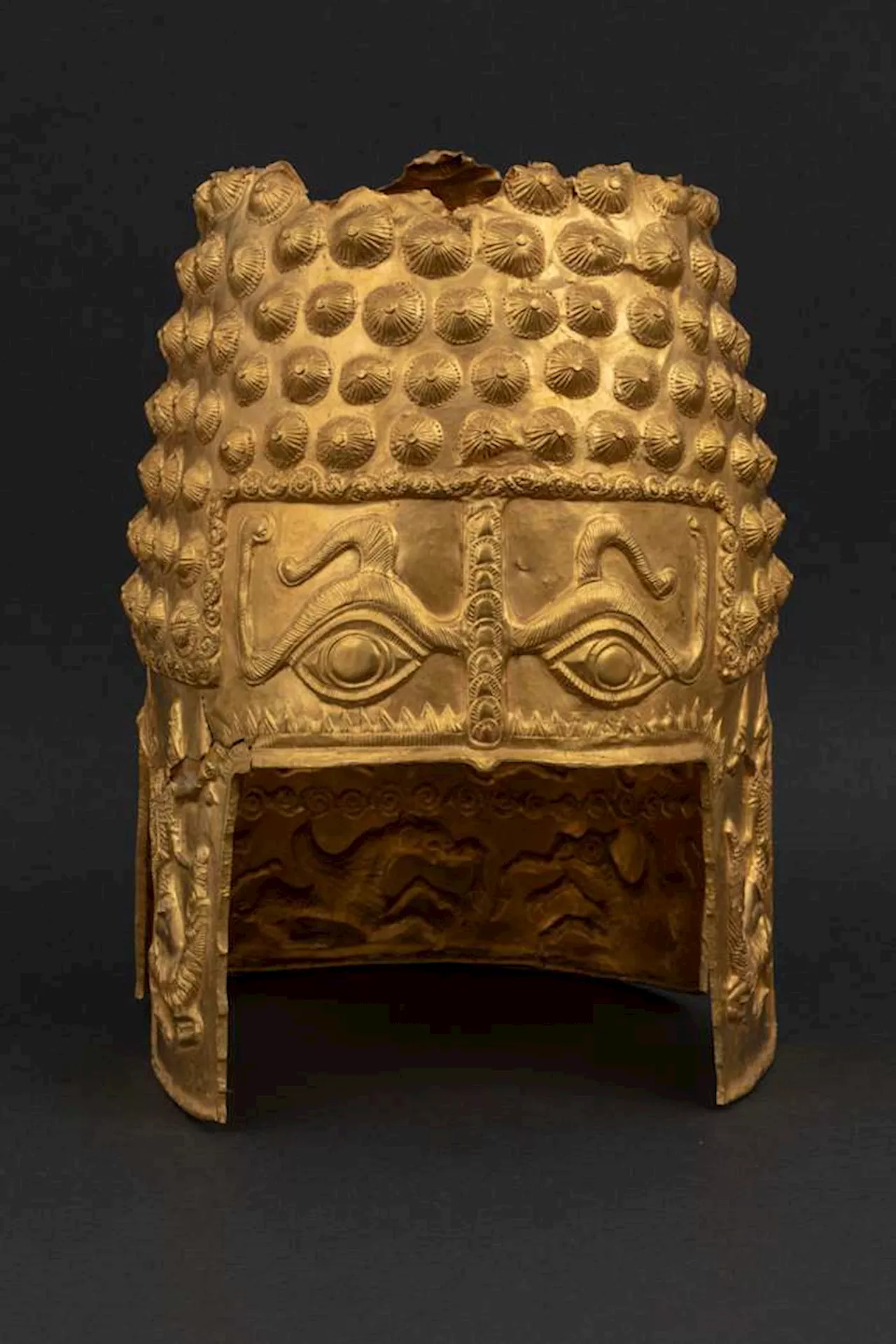 Ancient Romanian Helmet Stolen in Netherlands Museum HeistA 2,500-year-old golden helmet, a national treasure of Romania, was stolen from the Drents Museum in the Netherlands, along with three golden wristbands. Romanian authorities are devastated by the theft, calling it a 'crime against our state,' and emphasizing the helmet's immense cultural and historical value. Dutch investigators have found few clues beyond a burnt-out car near the museum, leading to speculation that the thieves targeted the gold itself for melting.
Ancient Romanian Helmet Stolen in Netherlands Museum HeistA 2,500-year-old golden helmet, a national treasure of Romania, was stolen from the Drents Museum in the Netherlands, along with three golden wristbands. Romanian authorities are devastated by the theft, calling it a 'crime against our state,' and emphasizing the helmet's immense cultural and historical value. Dutch investigators have found few clues beyond a burnt-out car near the museum, leading to speculation that the thieves targeted the gold itself for melting.
Read more »
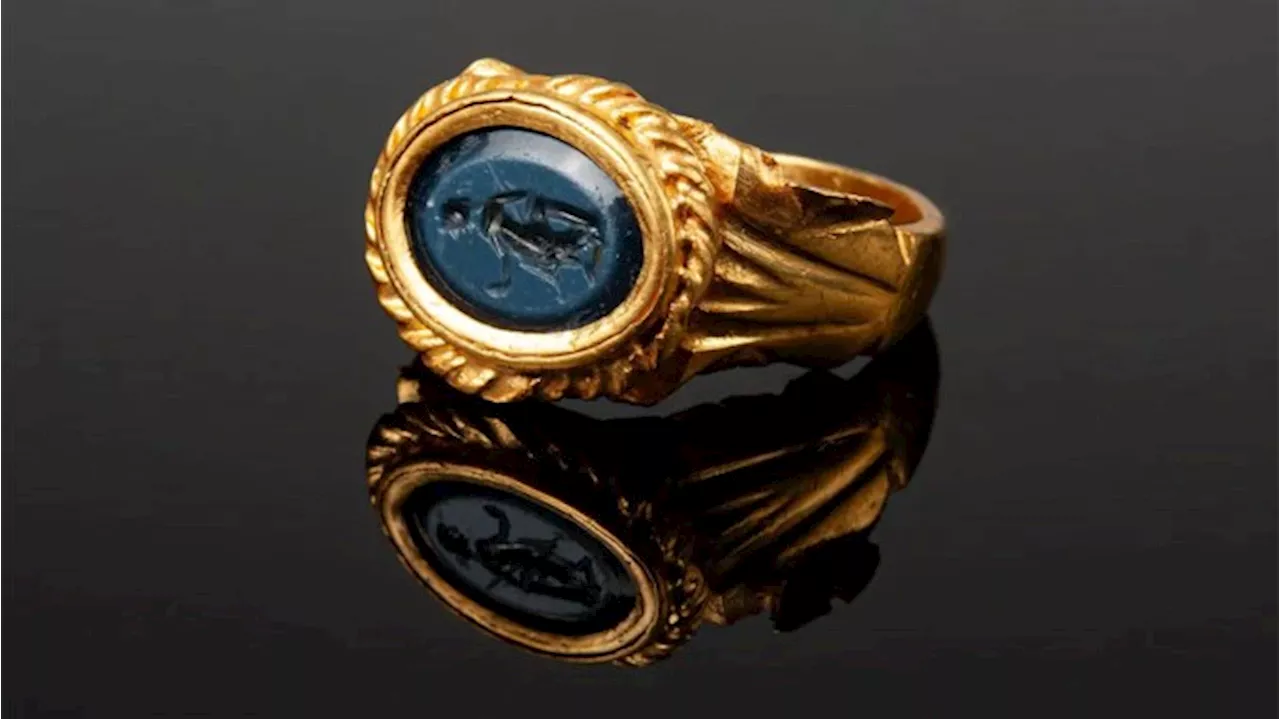 Centuries-Old Artifacts and an Ancient Roman Road Are Discovered in FranceFrench archaeologists unearthed artifacts and an ancient Roman road in Pacé, Brittany; including a ring that would have belonged to Roman elites.
Centuries-Old Artifacts and an Ancient Roman Road Are Discovered in FranceFrench archaeologists unearthed artifacts and an ancient Roman road in Pacé, Brittany; including a ring that would have belonged to Roman elites.
Read more »
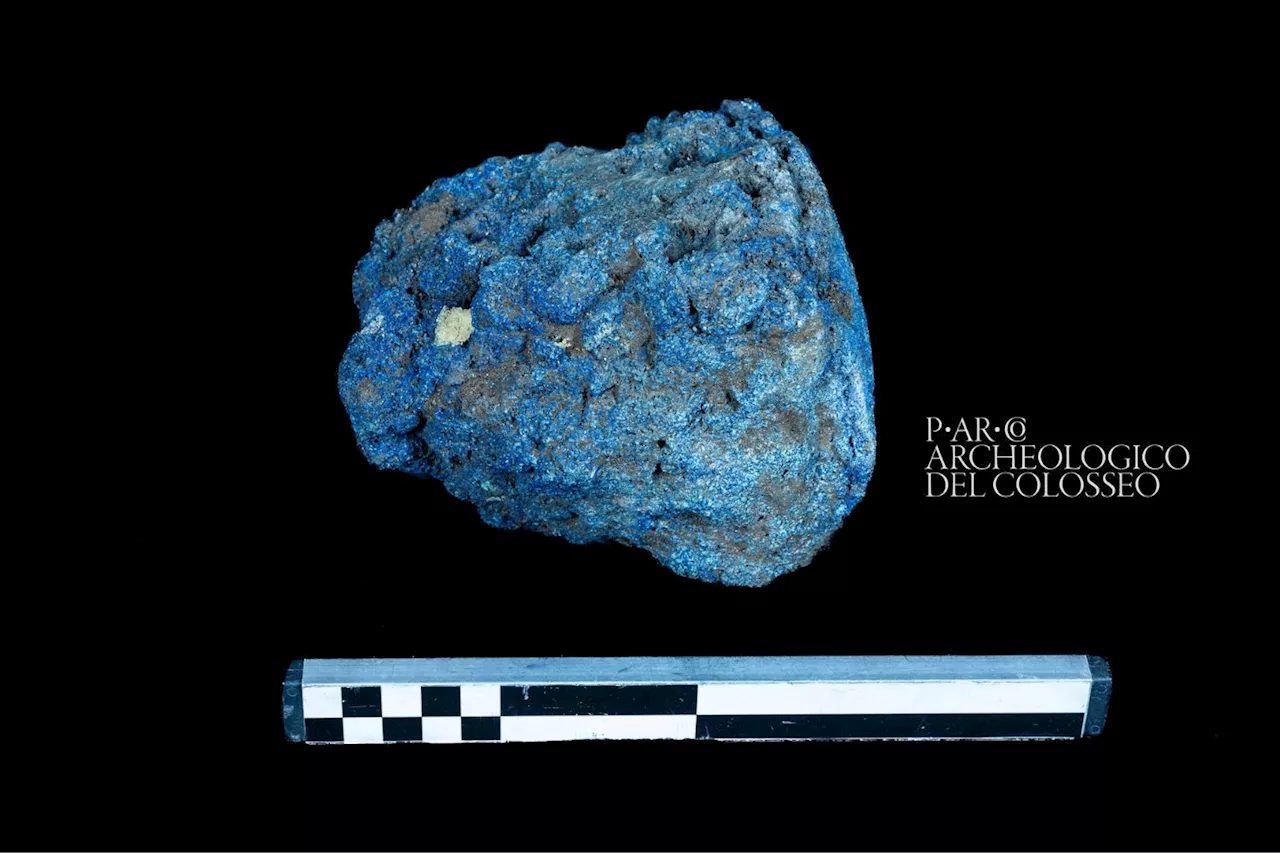 Ancient Roman Pigment Discovery Sheds Light on Imperial DecorationArchaeologists excavating Emperor Nero's Domus Aurea in Rome have unearthed containers with pigments used to decorate the imperial residence 2,000 years ago. Among the finds, a rare 5.29-pound ingot of Egyptian blue pigment, one of the oldest synthetic pigments known, stands out.
Ancient Roman Pigment Discovery Sheds Light on Imperial DecorationArchaeologists excavating Emperor Nero's Domus Aurea in Rome have unearthed containers with pigments used to decorate the imperial residence 2,000 years ago. Among the finds, a rare 5.29-pound ingot of Egyptian blue pigment, one of the oldest synthetic pigments known, stands out.
Read more »
 Ancient Roman Cemetery in France Reveals Curse Tablets and Insights into Gaulish LanguageA unique cemetery unearthed in Orléans, France, dating back to the 1st to 3rd centuries CE, has yielded over 60 male burials and 21 curse tablets inscribed with wishes and curses. The cemetery's unusual arrangement and the discovery of the curse tablets, written in both Latin and Gaulish, offer valuable insights into Roman-era burial practices and the language of the ancient Gauls.
Ancient Roman Cemetery in France Reveals Curse Tablets and Insights into Gaulish LanguageA unique cemetery unearthed in Orléans, France, dating back to the 1st to 3rd centuries CE, has yielded over 60 male burials and 21 curse tablets inscribed with wishes and curses. The cemetery's unusual arrangement and the discovery of the curse tablets, written in both Latin and Gaulish, offer valuable insights into Roman-era burial practices and the language of the ancient Gauls.
Read more »
 Ancient Roman Gold Coin Hoard Unearthed in LuxembourgArchaeologists in Luxembourg have discovered a trove of 141 gold Roman coins dating back to the 4th century, including the marks of nine emperors. The find, located near a fortified tower, provides unique insights into the economic and political climate of the late Roman Empire.
Ancient Roman Gold Coin Hoard Unearthed in LuxembourgArchaeologists in Luxembourg have discovered a trove of 141 gold Roman coins dating back to the 4th century, including the marks of nine emperors. The find, located near a fortified tower, provides unique insights into the economic and political climate of the late Roman Empire.
Read more »
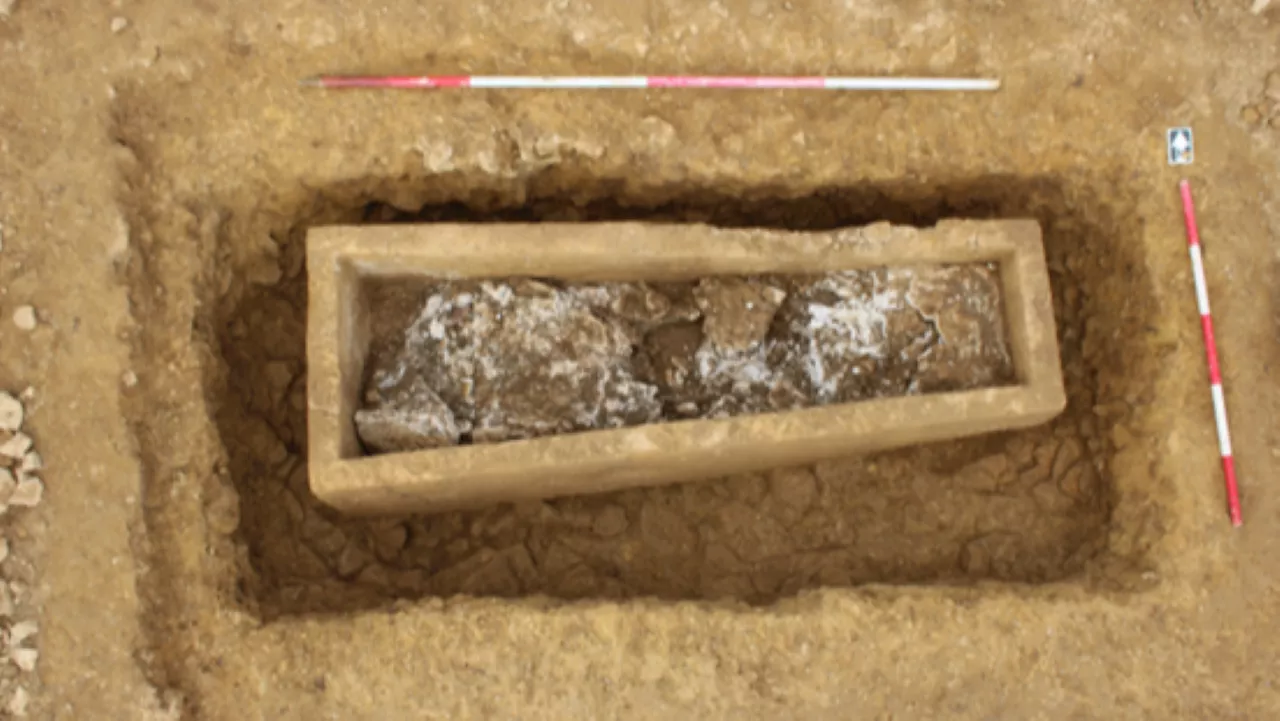 Ancient Roman Cemetery Discovered During Highway Construction in EnglandA recent highway construction project in England unearthed an ancient Roman cemetery, including a unique stone coffin filled with gypsum, offering insights into Roman burial customs and social practices.
Ancient Roman Cemetery Discovered During Highway Construction in EnglandA recent highway construction project in England unearthed an ancient Roman cemetery, including a unique stone coffin filled with gypsum, offering insights into Roman burial customs and social practices.
Read more »
